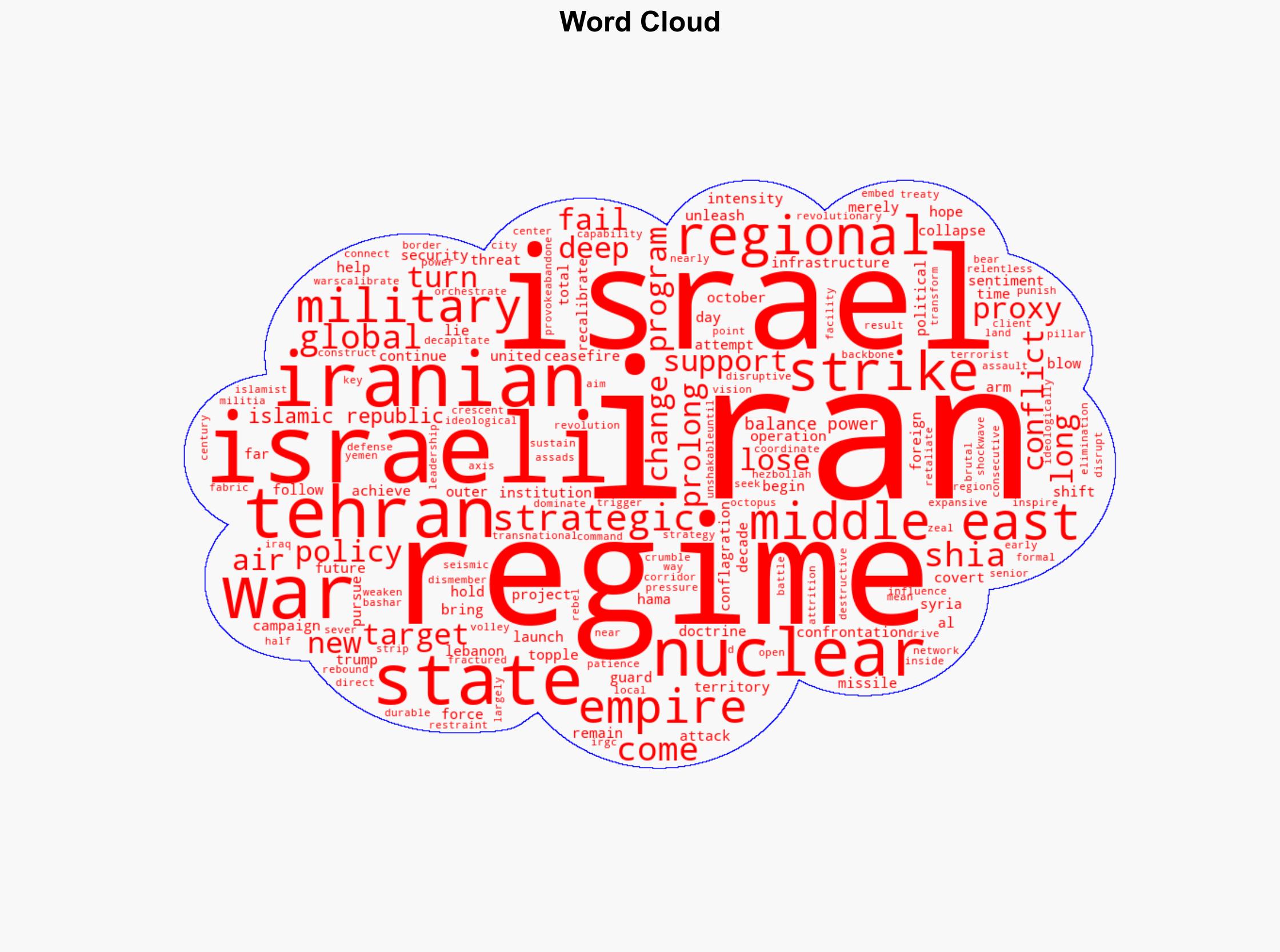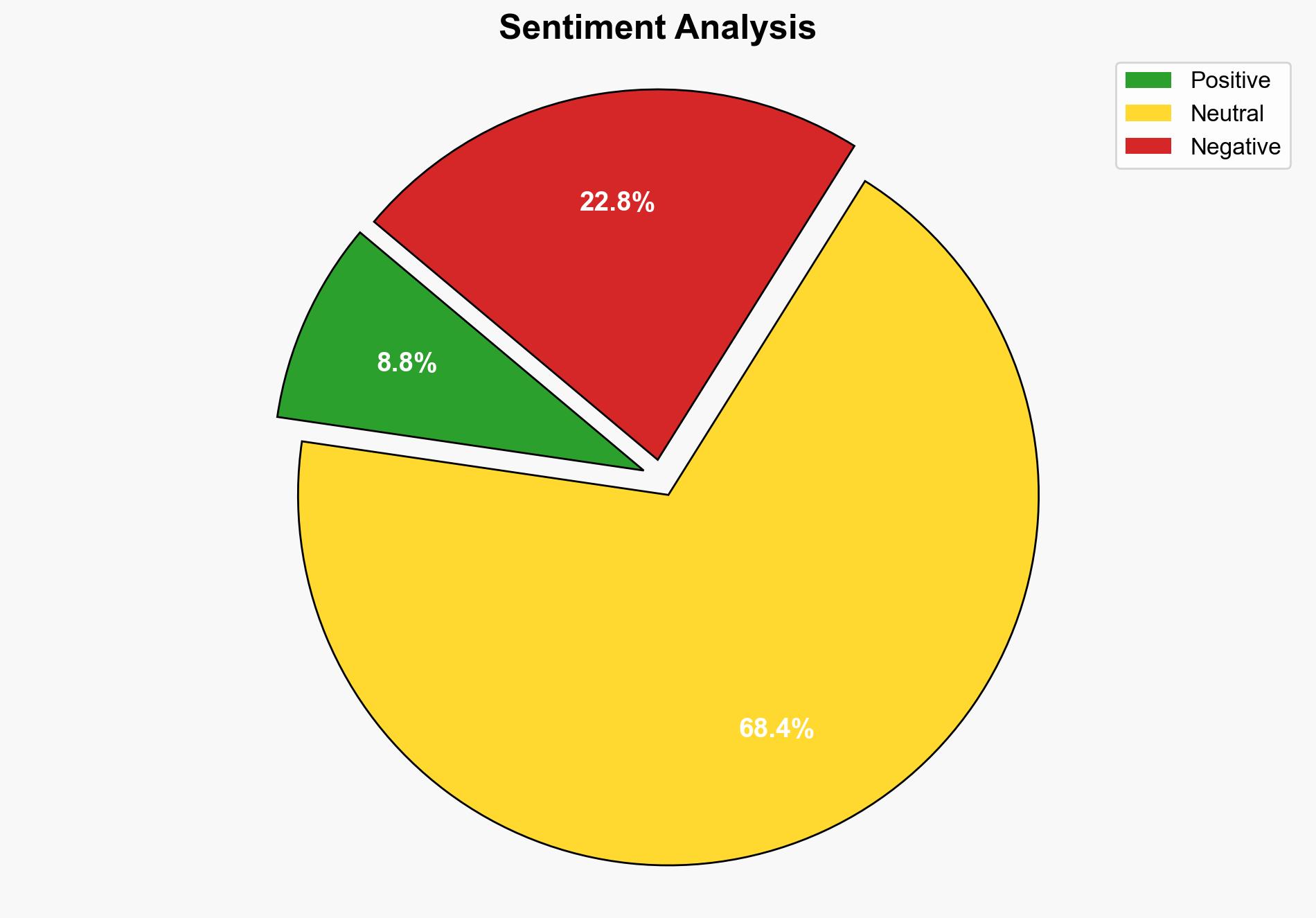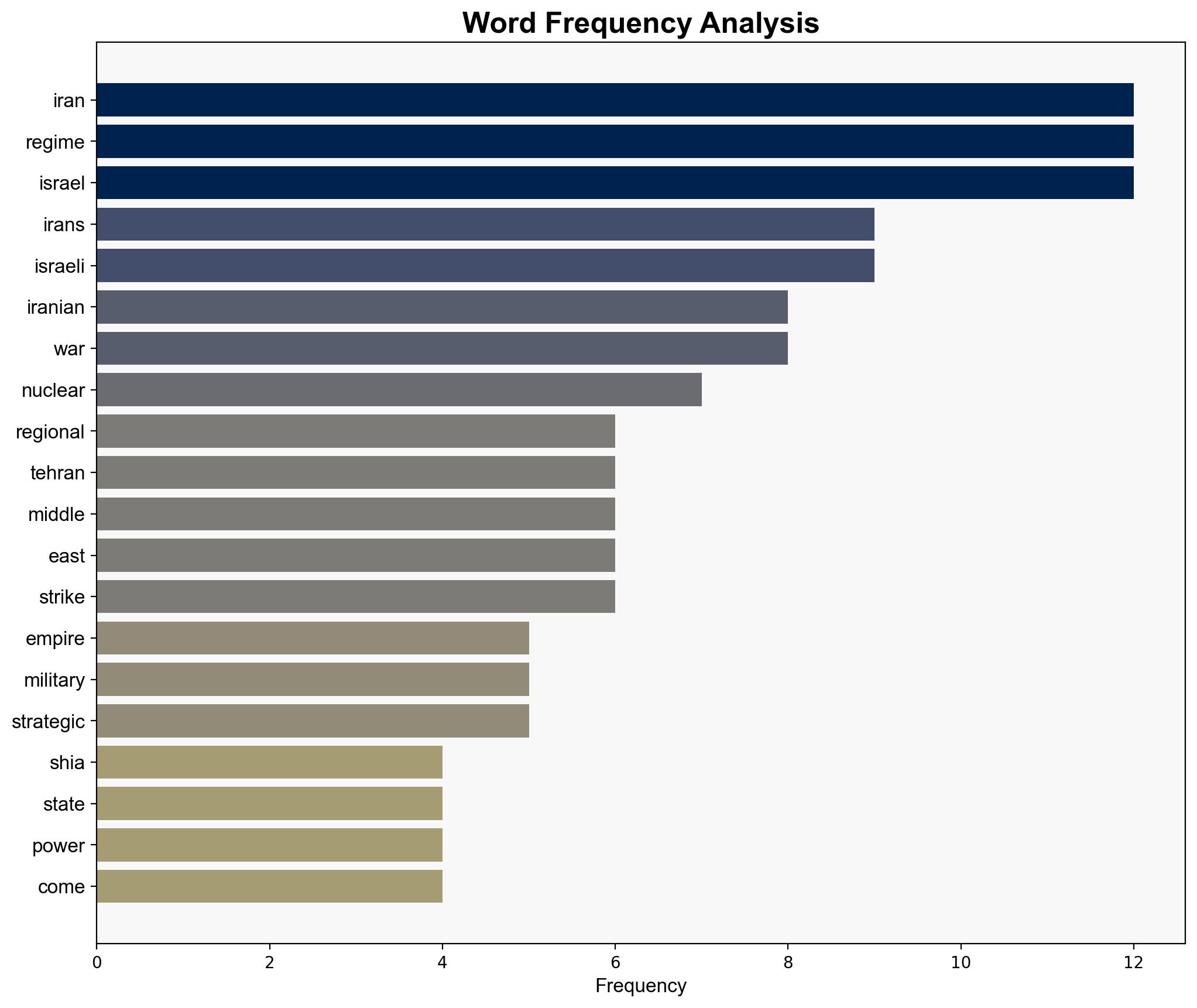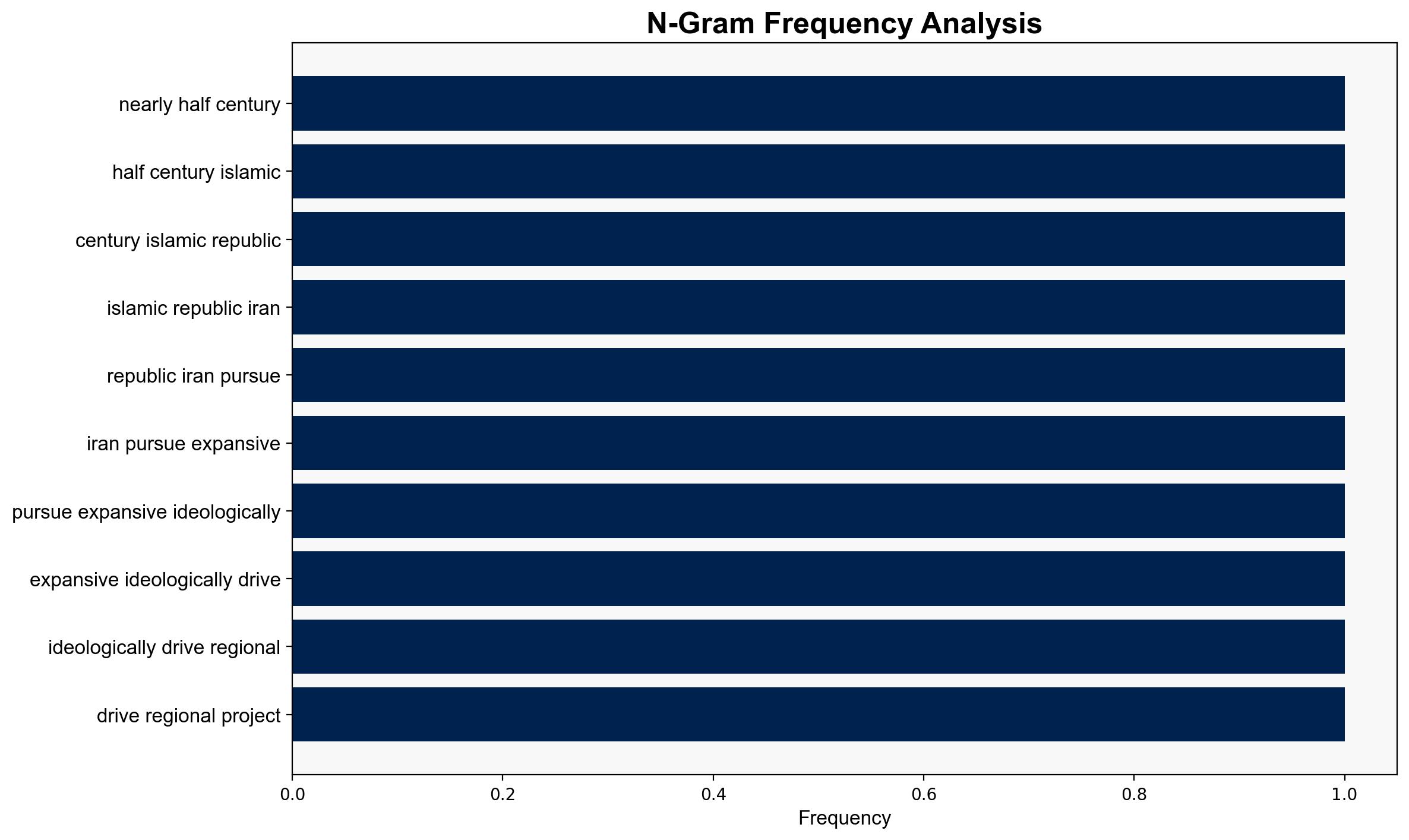The fall of Irans Shia Empire and the battle for a New Middle East – Israelnationalnews.com
Published on: 2025-07-05
Intelligence Report: The Fall of Iran’s Shia Empire and the Battle for a New Middle East – Israelnationalnews.com
1. BLUF (Bottom Line Up Front)
The recent escalation in the Middle East marks a significant shift in regional dynamics, with Iran’s influence waning due to strategic setbacks. The Israeli response to provocations has intensified, leading to a broader conflict with potential global implications. Key recommendations include enhancing diplomatic efforts to stabilize the region and preparing for potential retaliatory actions from Iran and its allies.
2. Detailed Analysis
The following structured analytic techniques have been applied to ensure methodological consistency:
Causal Layered Analysis (CLA)
The surface events include the recent attacks and military responses. Systemic structures involve the alliances and proxy networks Iran has established. The prevailing worldview is one of ideological conflict between Iran and Israel. The underlying myth is the perceived invincibility of Iran’s regional influence, now challenged.
Cross-Impact Simulation
The conflict has ripple effects on neighboring countries, potentially destabilizing Iraq and Syria further. Economic dependencies, particularly oil markets, are also at risk of disruption.
Scenario Generation
Possible futures include a prolonged conflict drawing in additional regional actors, a negotiated ceasefire with international mediation, or a rapid escalation into a broader war involving global powers.
Network Influence Mapping
Key actors include Iran’s Revolutionary Guard, Hezbollah, and Hamas. Their influence is mapped against Israeli military and intelligence capabilities, highlighting potential vulnerabilities and strengths.
Narrative Pattern Analysis
The ideological narratives focus on resistance and retaliation, with both sides framing their actions as defensive. This narrative fuels ongoing hostility and complicates diplomatic resolutions.
3. Implications and Strategic Risks
The primary risks include regional destabilization, increased terrorism, and potential cyber-attacks targeting critical infrastructure. The conflict could also lead to economic disruptions, particularly in global energy markets.
4. Recommendations and Outlook
- Enhance diplomatic engagement with regional and global powers to mediate tensions and prevent escalation.
- Strengthen cybersecurity measures to protect against potential retaliatory attacks.
- Scenario-based projections: Best case involves a negotiated peace; worst case sees regional war; most likely is a prolonged standoff with intermittent skirmishes.
5. Key Individuals and Entities
Key figures include leaders from Iran’s Revolutionary Guard and Israeli defense officials. Their decisions will significantly influence the conflict’s trajectory.
6. Thematic Tags
national security threats, cybersecurity, counter-terrorism, regional focus





